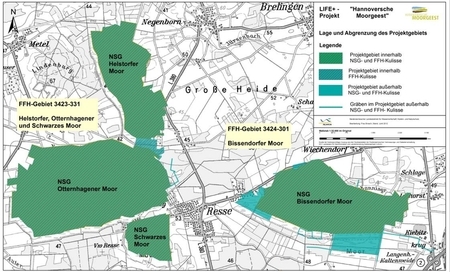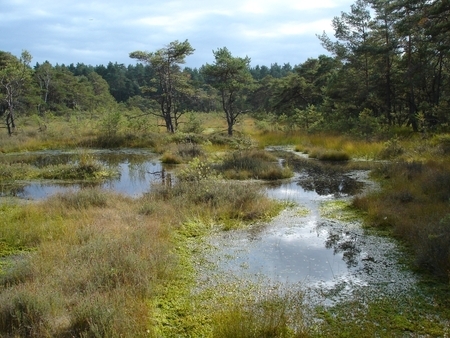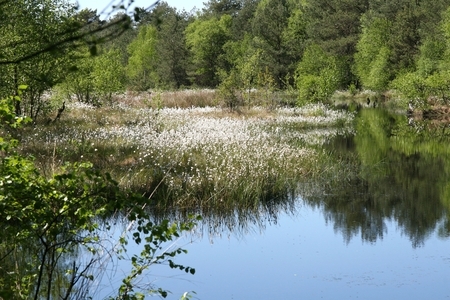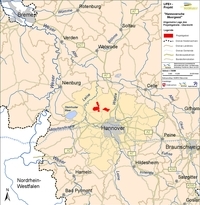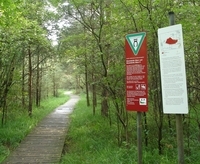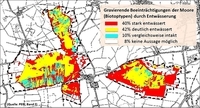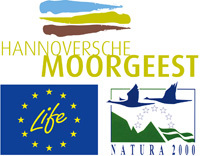
“Hannoversche Moorgeest” project area
The bogs have, in part, been nature reserves for decades and have been classified by the EU Commission as Fauna-Flora-Habitat (FFH) areas within the framework of the European “Natura 2000” network. This has made it possible to preserve about 93 percent of the project landscape and scenery and, in some cases, to already bring about a positive development.
There are still remains of active raised bogs in the central marshland areas. There are also bog woodlands, transition mires and quaking bogs, depressions on peat substrates (Rhynchosporion), as well as large areas of raised bogs capable of renaturation to be found there. Rare species of flora special to this habitat such as peat moss (Sphagnum), sundew (Drosera), cotton grass (Eriophorum), fenberries (Vaccinium oxycoccus) and erica (Erica tetralix) grow in the near-natural stretches typical of marshland.
Although there are valuable marshland habitats and species in 76 percent of the project area, they are, by European standards, often in a degraded state of conservation, the reason being the disruption of the natural hydrologic balance. Biotope structures indicate that more than 80 percent of the project area has been severely or substantially drained (see Illustration No. 11: Serious effects caused by drainage). The consequences are, invariably, increasing afforestation of the bogs, the displacement of typical marshland vegetation, and a rise in species not endemic to the area.
More detailed information on the four bogs:

Artikel-Informationen
Ansprechpartner/in:
Susanne Brosch
Nds. Landesbetrieb für Wasserwirtschaft, Küsten- und Naturschutz
Betriebsstelle Hannover-Hildesheim
- Projektleitung Life+ Moorgeest
Göttinger Chaussee 76 A
D-30453 Hannover
Tel: +49 (0)511 / 3034-3115



